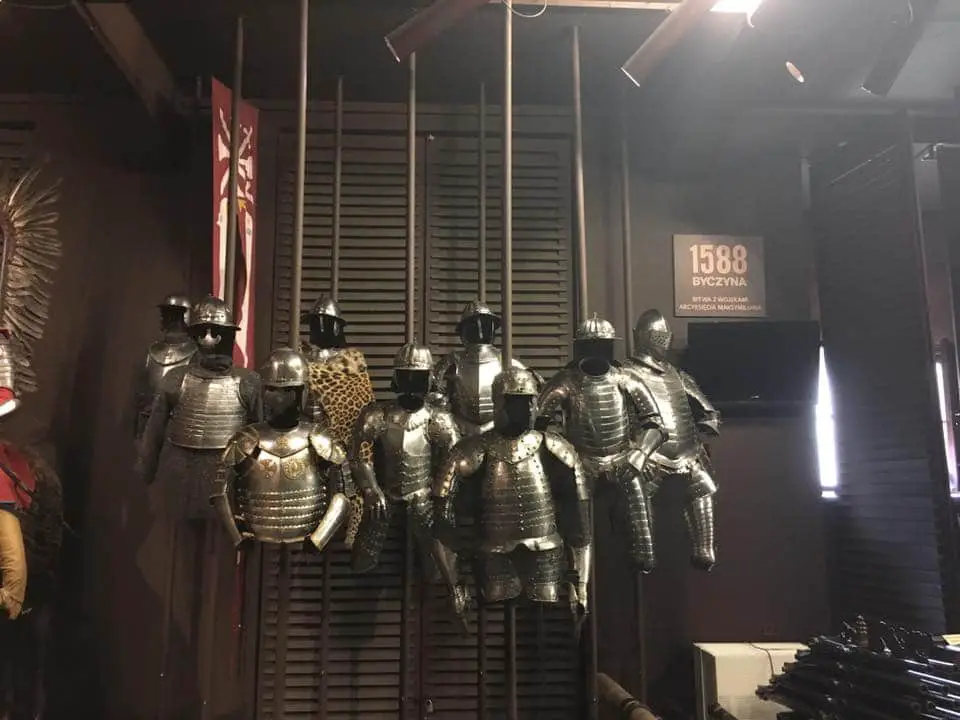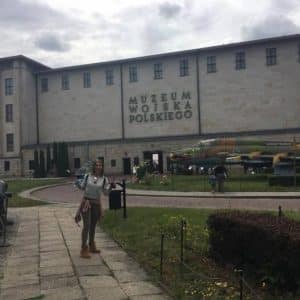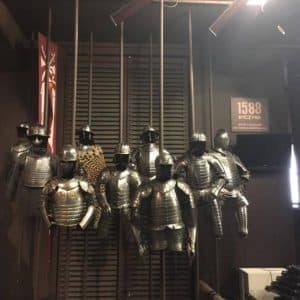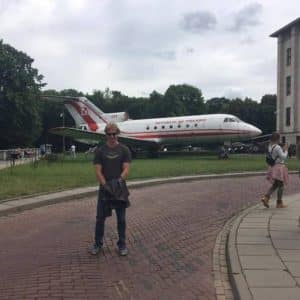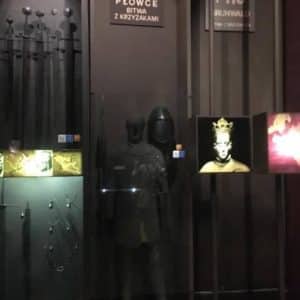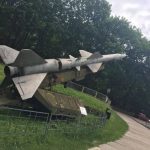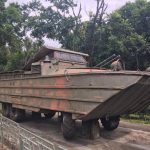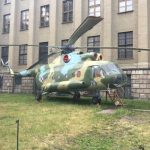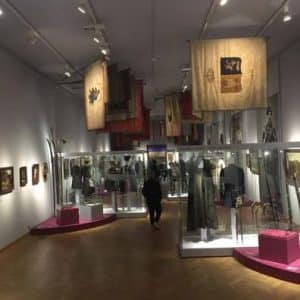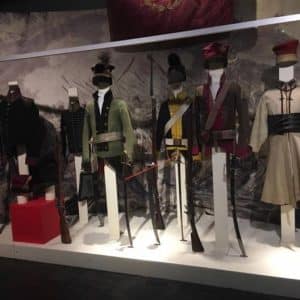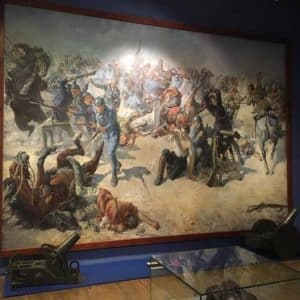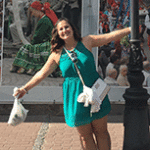Muzeum Wojska Polskiego (Polish Army Museum)
Aleje Jerozolimskie 3
Ticket Prices: Normal- 15 PLN
Reduced- 8 PLN
Saturdays- Free Admission
Website
Warsaw is especially associated with its place in the Second World War, and coming to Poland, I was already aware of that specific era in Poland history. However, I was curious about the other significant military events in Polish history, so two of my friends and I decided to explore the Polish Army Museum to learn more.
As we approached the building, you can see from a distance the fighter planes and tanks lined up outside the museum. These were relics from as far back as World War I. Some were completely intact, and some looked like they went through tough battles. Missile launchers and cannons also lined the sidewalk. Stopping to read the provided description of each piece, it took about 30 minutes to see everything. The sidewalk even descended to a landing which showcased amphibious vehicles and a few more tanks. This part of the museum is open all day every day, but I definitely suggest going during daylight so you can see all the detailed paintings and battle wounds of each artifact.
We then wandered into the inside part of the museum. This part accepts visitors up to 30 minutes before the closing time, and I suggest giving yourself about an hour to go through it. Saturdays are free of admission, so it is a nice thing to do if you are staying in Warsaw for the day.
The flow of the museum goes through different time periods in Polish military history, starting with the Medieval Era in the 14th century. The room displays armor and weaponry of knights and their horses. A myriad of swords and cannons used during that time period are also on display, and the walls are adorned with the past flags of the nation. It is incredible to think of how old the country is, especially when compared to the short history that we have in America.
The room then leads you to the 16th century, when Poland existed as the Polish-Lithuanian Commonwealth and was fighting for border control. It shows the vicious battles that ultimately ended the Commonwealth. The museum continues to the 18th century where more clothes, guns and medals awarded to generals of the army are on display. Most descriptions of what the Commanders accomplished during their time in the military were written in Polish, but usually there was an accompanying painting showing the battles that they lead, and it was easy to correlate the relics with each battle.
The final, massive room was dedicated to the two World Wars. There were so many fascinating artifacts—including a parachute that was still attached to a tree! There are more than a thousand items located in this part of the museum. Everything from uniforms, guns, and knives, to written plans on how to carry out operations were displayed in the glass cases.
The effect that World War II had on Poland is fairly well known, but going to this museum reminds us that there is so much more history that involved blood, bruises, bullets, death, and dents to create the Poland that exists today.


